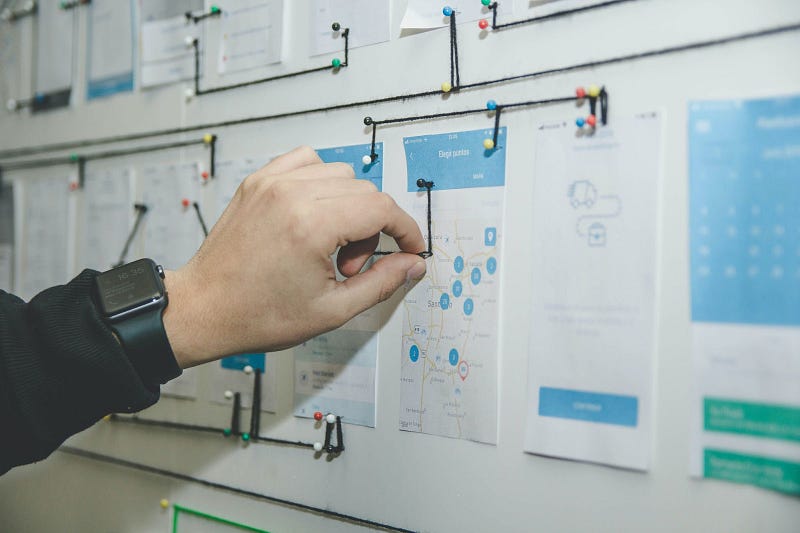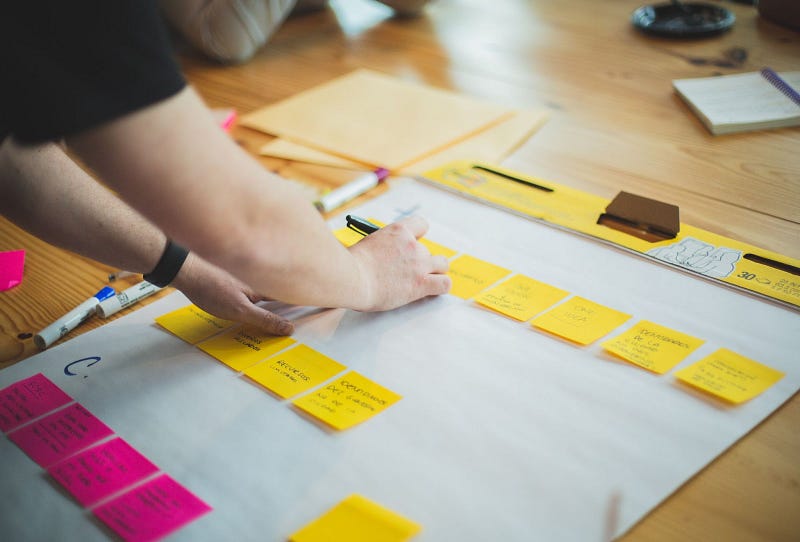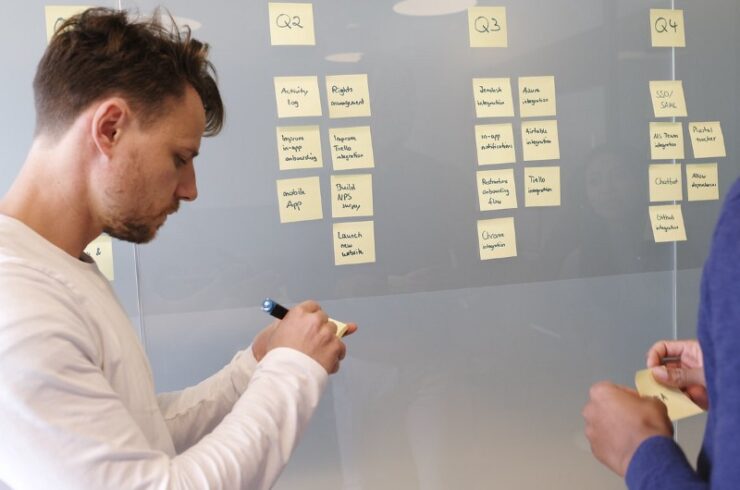In our increasingly coordinated world, delivering projects on time is key to a successful business. But what’s the best and most reliable way to do so? Project timelines.
If you’re a team leader or a member of a team, you’ve likely worked with timelines before. These timelines provide insight into your overall efficiency and productivity, and they’re used across many industries and niches.
For example, timelines are widely used in construction projects, like the development of the I-81 in New York.
Although these timelines are essential in projects and are determining factors in their success, they’re often taken for granted. The truth is, however, that the more time we contribute to the organization and development of timelines, the easier projects can progress.
In this article, we will discuss the definition of project timelines and explore how these timelines can help companies grow.
Let’s take a closer look!
What is a project timeline?
Timelines are primary components of workflows, and they describe the timeframe required for tasks and overall projects. These timelines subsequently refer to project deliverables in chronological order, and project managers often include the budgets for every task when reviewing timelines.
Timelines provide project managers and team members alike with a detailed overview of projects. They allow you to review when tasks and projects begin, and they indicate which deliverables you must accomplish to succeed.
Here are several components of project timelines you can expect to work with:
- A description of the tasks
- The team members who work on the previously mentioned tasks
- The length of time for all tasks
- The budget for tasks
Why project timelines?
Project timelines are crucial components of successful projects for four main reasons. In order, they:
1) Help organize and plan the project,
2) Keep everyone on track and accountable,
3) Facilitate communication between stakeholders, and
4) Serve as a reference point for revisiting the project’s goals.
By being transparent and clear about what is expected, timelines help to set and manage expectations. As such, they are particularly useful for large or complex projects with multiple stakeholders.
Note: if your company is small, you may be able to get away without a timeline. However, even small organizations benefit from instituting strict and transparent timelines, and their introduction can systematize workflows across any industry for a better end result.
Benefits of using project timelines
In addition to these components, let’s review some of the benefits of using project timelines to help organizations grow or scale.
Benefit #1: Project timelines improve tracking
One benefit of using project timelines is that it helps you schedule tasks and deliverables for your projects — not just in terms of their due dates, but in terms of their stages as well.
Today, many managers routinely use software that helps them track tasks and achievements over time as the project develops. For an example near and dear to our hearts, that’s one of the reasons Day.io has been able to thrive; instituting robust tracking measures with our software allows companies to take ownership over where time is being spent and improve the efficiency of their team.
But aside from software, there are a few concrete methods you can use to improve project tracking and timelines. Here are some of them:
- Create a project outline: You can create project outlines by asking team members for their input and establishing realistic goals for the project. This helps with tracking because both project managers and team members can describe their goals and capabilities, as well as the way they’d like to structure deliverables. Outlines allow you to establish exactly when you want to begin tasks, and who you want to work on them.

- Determine goals ahead of time: If you want to track project progress, it’s beneficial to establish the goals and milestones of the team beforehand. Understand that the exact details of these goals depend on the team members with whom you speak because their progress will look different.
For example, if a team member wants to improve one of their soft skills over the course of a project, like conversation, this is much more difficult to measure than a team member who wants to improve their output delivery time by 10%. One is intangible and qualitative; the other depends solely on the amount of time it takes to complete a task.
The more aware you are of the goals and limitations of team members, and the closer you are with them, the easier it is for you to measure their individual progress (along with how it relates to the project’s trajectory).
- Check-in with team members on their estimated completion times: You can’t just create timelines without checking in on how reasonable it is for your team members. To do this, simply have an informal discussion with your team members about their progress and how they feel about the project. This can help you identify primary areas for improvement that would otherwise go unnoticed. For example, if you know that a team member is experiencing difficulty meeting deadlines for a project, you can implement changes to help them complete their tasks ahead of time, or you can modify the delivery schedule.
- Ask how you can help your team: If you want to optimize the timeline and project outline, it’s also beneficial to ask team members how you can help. This provides them with some control over the project and allows you to suggest tools and strategies to help with task management.
Benefit #2: Establish task prioritization
Everyone experiences issues during project completion — that’s normal. The most important thing is how you deal with them.
One of the best ways for you to handle these obstacles from blocking or stopping a project is to establish a prioritization scheme; a system for managing which tasks to complete at which times.

For example, you can decide to prioritize tasks to complete the most complex ones first. This helps ensure that when you encounter obstacles later in the project, you’ve likely already completed your most complex ones. When prioritizing tasks, you typically want to divide them into predetermined categories, like urgent or not important.
Benefit #3: Increase communication among project members
Project timelines force you to communicate more effectively with your team. This is because you must communicate with team members to determine realistic timelines. If you need help communicating with your team, here are some tips you can use:
- Listen actively
- Understand the communication styles of your team
- Pay attention to body language
- Offer constructive feedback
You can also implement a project management timeline template, which allows every team member to receive accurate and clear information about the project.
Bonus: timelines facilitate stakeholder involvement
Timelines aren’t just about tracking time. They also help to communicate the project’s progress and status to all stakeholders.
This is done by creating a “visual representation” of the project which can be easily understood by all team members.
With a timeline in place, stakeholders will know what is expected of them and when. This helps to reduce confusion and ensures that everyone — regardless of their particular involvement in the project — is on the same page.
For example, imagine you’re a project manager working on a timeline for a new website. You would need to communicate with designers, developers, copywriters, and other team members to get their input and ensure everyone is on the same page.
A project timeline can help make this communication process much smoother. It provides a “roadmap” for the project and allows everyone to see how their individual tasks fit into the big picture.
This is especially helpful when different team members are working on different parts of the project. By seeing how their work impacts the rest of the project, they can better collaborate and avoid any overlap or conflict.
Benefit #4: Mutual accountability
In today’s world, transparency is essential to a successful business. This means that every individual and department is accountable for their actions — from the CEO down to the intern.
A project timeline can help with this by ensuring that everyone knows what is happening, when it is happening, and who is responsible for each step of the process. This creates an environment of trust and understanding, where everyone is working towards the same goal.
In addition, having a timeline can help managers identify potential problems and correct them before they become bigger issues. This improves accountability and helps to ensure that projects are completed on time and within budget.
It’s a weird blend of paranoia and total trust; knowing who is responsible for every step and where to place the blame when something goes wrong. But it works, and it’s one of the reasons why project timelines are so important.

Final thoughts: developing a project timeline
If you’ve gotten to the end of this article, you now understand the point of — and have the tools required to improve — your company’s project timelines. By taking the time to intelligently analyze a project’s goals, deliverables, and schedule, you can significantly improve the efficiency with which tasks are completed.
Best of luck!
